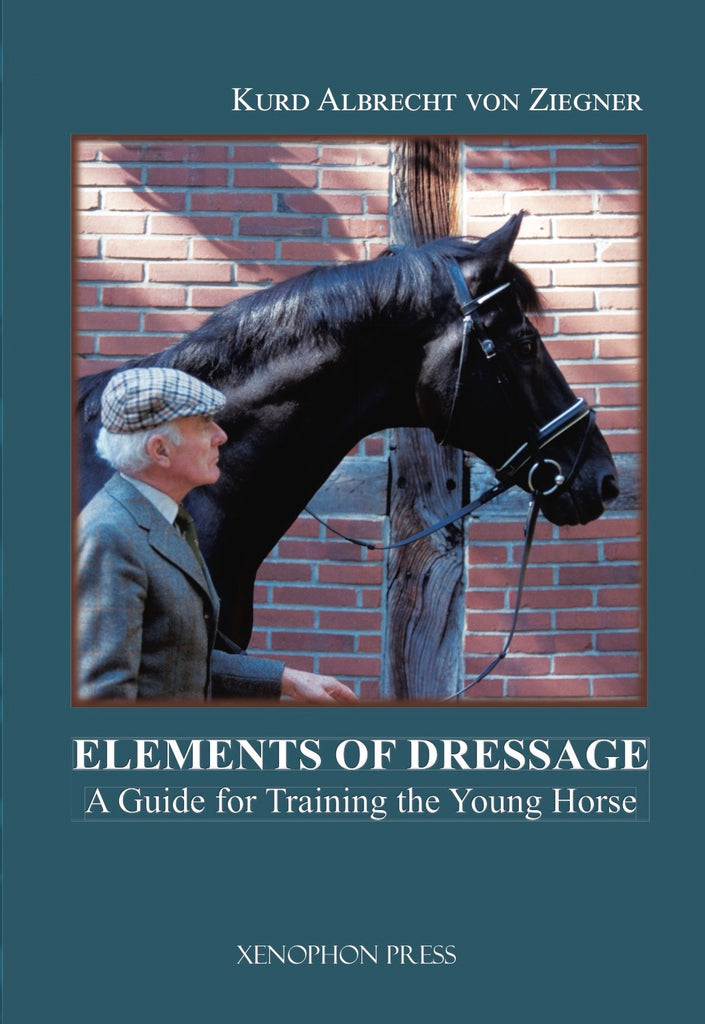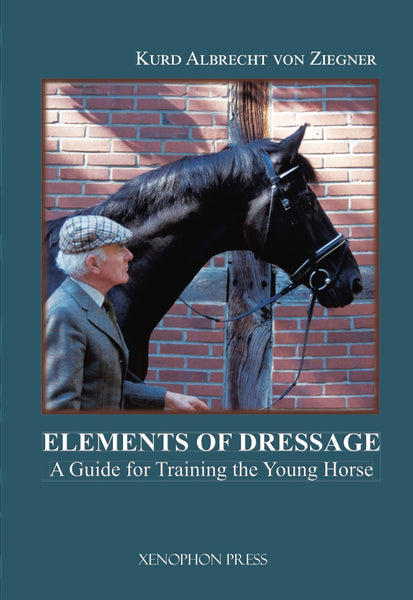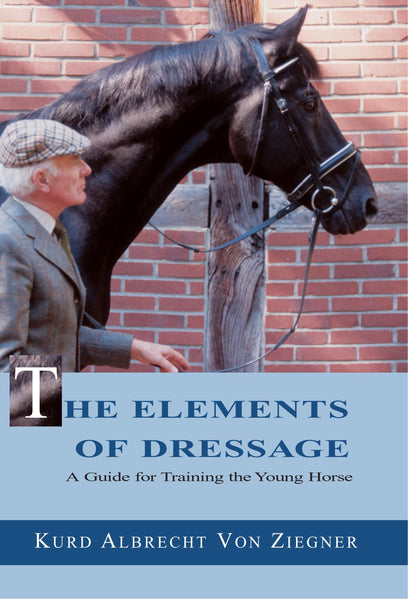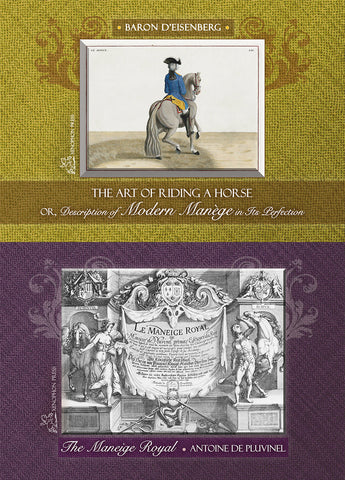The Elements of Dressage: a Guide for Training the Young Horse by von Ziegner
Writing a foreword to a book whose author is one of the most renowned connoisseurs of classical horsemanship is both a great honor and a challenge.
Before I give a few thoughts on Kurd Albrecht von Ziegner’s person, I would like to briefly describe the present work.
The book, first published as “The Basics” in the 1990s, by Xenophon Press, is now one of the most substantial specialist books on classic, German National/Gustav Steinbrecht-based [Gymnasium of the Horse, 1994 Xenophon Press] riding theory written in the last 40 years.
In my opinion, especially today, advocacy by Kurd Albrecht von Ziegner that the classic riding school methodology cannot be negotiated, shortened or modernized is even more relevant. The training system of our current guidelines can be traced back almost completely to the first generally recognized riding theory found in The H.Dv.12 German Cavalry Manual [English translation by Xenophon Press 2014].
The basic systems for training of a riding horse, regardless of the desired discipline in which the young horse is later to be further promoted, builds on fixed principles that are referred to as “foundations” in von Ziegner’s work.
This basic system of training a young horse is uniquely presented in a clear, conclusive and understandable way in this book. You can feel in every sentence that all of these important insights have been learned, experienced and practiced for decades. Every rider who wants to train young horses should internalize this method and should always teach it to every horse without compromise. Any attempt to deviate from this method, or to abbreviate it always leads to minor or major training errors up to and sometimes including the un-rideability (mental and/or physical overload) of a horse or ultimate wear and tear to its health.
Especially at a time when new gurus are springing up like grass in spring and often proclaiming “a one and only true art of riding,” it is particularly important to listen to the authors who have developed our “classical art of riding” by learning, living and teaching through a lifetime of experience.
Kurd Albrecht was one of the last representatives of those who transformed the first generally recognized riding theory, The H. Dv.12, from 1912, forms a guideline for the training of soldiers and military horses into a method applicable to our modern age.
The generally recognized scale of training can be viewed as an excerpt from this military guideline.
Mr. von Ziegner was actively involved in the creation of this system in the 1970s. The question of the arrangement or sequence, especially of the first points (rhythm and relaxation) occupied him throughout his life. His training tree is the result of years of grappling with this question.
Admittedly, I have to say that the absoluteness with which this order is laid down can and should be questioned. Nevertheless, this thought process is, of course, not a contradiction to the principles of the guidelines and the training scale. Kurd Albrecht was an experienced practitioner, not always a simple contemporary, but nevertheless a wonderful teacher, a great thinker, a wonderful friend and a great role model.
I wish every rider would read and live this book!
Gerd Heuschman
Germany 2022
interested in riding and training horse for dressage, 3-day eventing or jumping. Elements of Dressage: A Guide for Training the Young Horse, was developed to help riders, trainers and judges understand what it takes to classically train a horse so it can
succeed in any discipline.
In Elements of Dressage, K.A. von Ziegner presents the “Training Tree,” a mnemonic diagram that is correct, and easy to remember and understand. It outlines the ten essential elements of classical basic training and shows how these conceptual elements are related and in what order they should be achieved.
From the Table of Contents they are:
• Collection
• Impulsion
• Suppleness
• Balance
• Straightness
• “On the Aids”
• Contact / Connection
• Freedom of Movement
• Regularity
• Relaxation
The author clearly explains how trainers and riders can apply dressage work gently and logically in order to develop a solid mental and physical foundation for any horse.
This book will help riders and trainers in teaching a horse to be sound, confident and well prepared for work and competition at advanced levels for all areas of specialized training whether it be dressage, jumping, eventing, endurance or any other type of equestrian specialization.
About the author
Beginning in 1971, Colonel Kurd Albrecht von Ziegner (1918-2016) operated an internationally renowned riding school in Mechtersen, Germany, south of Hamburg. Trained as an officer in the cavalry school in Hannover, he became a leading NATO officer in the 1950s and took over the construction of the Turkish cavalry school in Ankara. He was also one of the most prominent and successful dressage trainers in the
United States, where he developed a new dressage test, the Prix St. James. Winner of the German Rider Cross in Gold, the author shares insights from more than fifty years of training. He is also the author of many articles and books including The Basics: A Guideline for Successful Training [Xenophon Press].
K. A. von Ziegner has developed an indispensable training tool for dressage, eventing, and jumping. This book was developed to help riders, trainers, and judges understand what it takes to classically train a horse so it can succeed in any discipline. Here, he presents the "Training Tree," a concept that is compelling and easy to understand. It outlines the 10 essential elements of classical basic training and shows how the elements are related and in what order they should be achieved. The author clearly explains how trainers and riders can apply for dressage work gently and logically, in order to develop a solid foundation in any horse, mentally as well as physically. This book will assist trainers and riders in teaching a horse to be sound, confident, and well-prepared for work and competition at the advanced levels.
A recent review:
"The 2022 edition of Elements of Dressage from Xenophon Press is a must read for those who are serious about training a young horse or for improving the training of an older horse. The author thoroughly explains in a systematic and easy to understand way, the process of bringing a horse along through the phases of training, the importance of developing a solid base and of how each step is related to the next. The 2022 edition features a new forward by Dr. Gerd Hueschmann and has corrected a number of translation mistakes, grammatical errors and misspellings which made previous editions difficult to follow. An indispensable read for those who desire to learn the phases of classical training. The author's love of, and respect for, the horse and classical training is clear throughout the text." - A.J.




